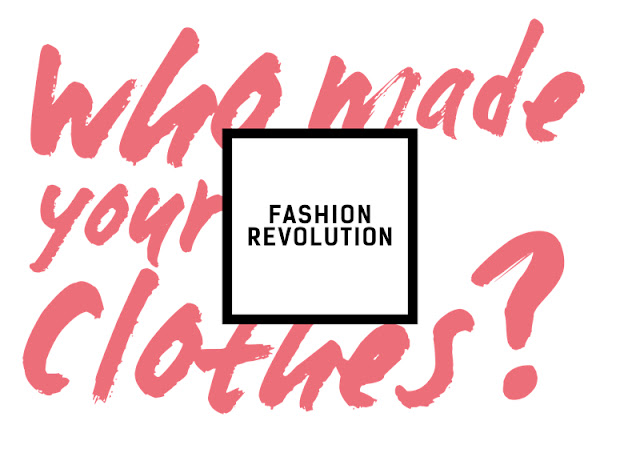Who Made Your Clothes?
Fast Fashion is a term which has derived from the negative impacts caused by the fashion industry. Whether it be through the fact that 170 million child labourers are used to make our clothes, or that £140 million worth of clothing goes to landfill every year, there's no denying that the fashion industry has been providing us with the cries for help that we, the consumer have regretfully ignored.
In a recent lecture of mine, Orsola de Castro, founder of Fashion Revolution day and brand Estethica (a platform for ethical fashion at London Fashion Week), made an incredibly interesting point, she asked "Why is the food industry so far ahead of the fashion industry?". For example, blue smarties were banned in 2006 for the toxins they contained, but yet it's ethically sound for us to wear garments that have required the use of hundreds and thousands of pesticides each year on cotton?
Orsola became very enthralled in the idea of up-cycling after having an orange jumper which had a hole in it, she re-designed the jumper and not long after designers appeared to love her future work, the more holes in an item, the more pricier they became. Orsola was a part of a team of people who turned speedo swimwear into ballgowns, which turned out to be a sell out collection as it enabled consumers to have stories to tell about their dress, and Orsola believes that narrative in fashion is key.


Orsola was also involved with Topshop's up-cycling collection. It was in fact a best selling collection 3 times running in 2011, 2012 and 2013. The collection was called Topshop Reclaim and was made from lots of up-cycled garments. It was never marketed as 'eco-fashion' and fitted the brands style and aesthetic. As well as Topshop, Tesco's F&F brand have also featured up-cycled garments in their collections.
 |
| Christopher Raeburn Spring/Summer 2011 - Coats made out of Parachute Silk |
Every year, 80 billion garments leave factories, but an incredible 60 billion garments are left on the floor. The slightest defect and the material is discarded in a warehouse and left to deteriorate. The reason for this is simple, it's cheaper to order new fabric than it is to source the left over material. Sri Lanka is notorious for such happenings, where warehouses the size of football pitches are packed with defected material.


'The True Cost', a documentary about the dangers of the fashion industry, and Lucy Siegle's best selling book 'Is Fashion Wearing Out the World?' are clear evidence that issues in the fashion industry have been identified, but are yet to be rectified, and instead are over-shadowed by issues in other industries, but the fashion industry is more influential than most people think and has influenced our lives since humans wore animal skin as protection.
So what can be done right now to help save the fashion industry, and ultimately our planet?
Shopping Habits
Start researching what brands have moral and ethical values, do they know where their garments are sourced and produced? Do they pay workers the minimum living wage? Once you discover those who have ethical values, start shopping primarily at those brands.
Be Assertive
One of the most effective ways to help reduce fast fashion, is by being selective when you see something you like, ask yourself do you really need it? If you ever have any doubt when buying something then don't buy it - after all, it can't be that great if you're second guessing?
Buy Timeless Pieces
If you equip your wardrobe with the essentials, we're talking jeans, a white t-shirt, LBD, a leather jacket etc. Buy pieces which are considered a classic, must-have item, all-year round every year and you will always have something to wear, even when you don't think you do. Plus you're less likely to throw items away carelessly.
Create Awareness
Use social media to target big brands and question them. Do they know the ins and outs of their garments? Join Fashion Revolution and upload a picture of yourself with a garment and it's label on show, tag the brand of the item and ask with the hashtag #whomademyclothes
24/04/2016









No comments: